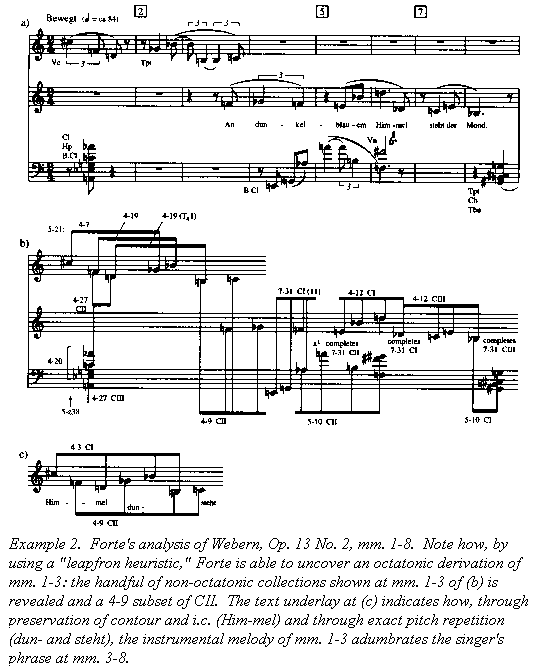[Allen] Forte’s work has been guided by a cartographic impulse that can conceal the deeper value of his innovations. In the present work, for instance, he tirelessly maps out the surface of several dozen individual movements by Webern, in many cases relating each and every note to a matrix consisting of octatonic subsets grouped together according to which of the three forms of p.c. set class 8-28 they evoke. As often is the case with Forte, the actual analytical insights are often concealed below the surface of the analyses. Insights are here in abundance, however, especially in Forte’s treatment of the later works of Webern’s atonal oeuvre, opp. 12–16. Paradoxically, it is in discussing these works that Forte makes his case for the centrality of the octatonic to Webern’s music most convincingly, even though (as Forte himself admits) his octatonic Swiss army knife works less infallibly here than in the earlier opus numbers due to Webern’s introduction of an increasing number of non-octatonic surface formations.
https://www.mtosmt.org/issues/mto.00.6. ... perry.html
(Forte is about everybody's go-to regarding Webern, or at least among the chief referents when one is going to embark on that kind of work. Forte was innovative in that he decided there was such an ethos to this music that the structure as a whole may be known, rather than it being individual wild hairs ad culum.)
here's a picture:





